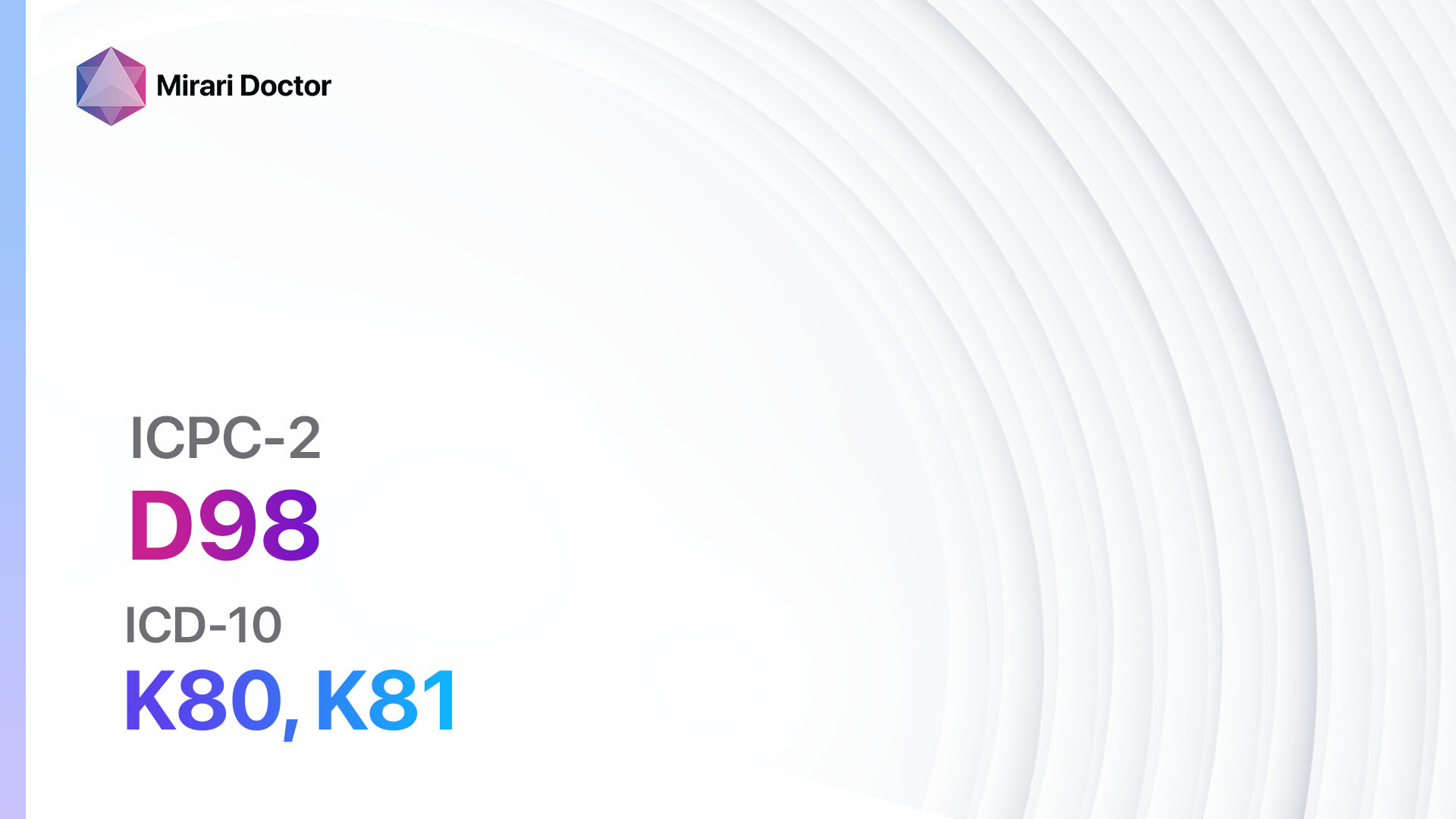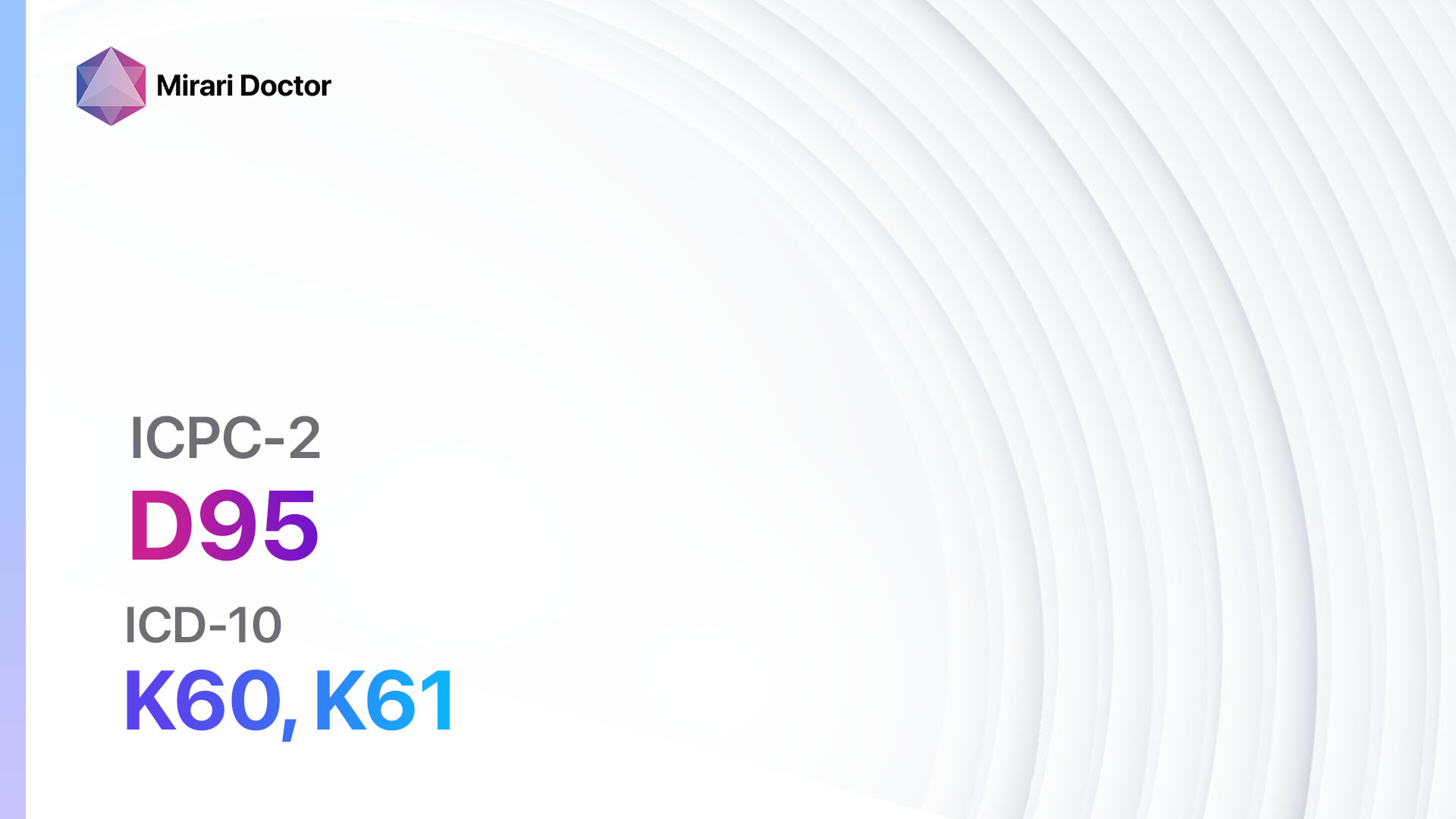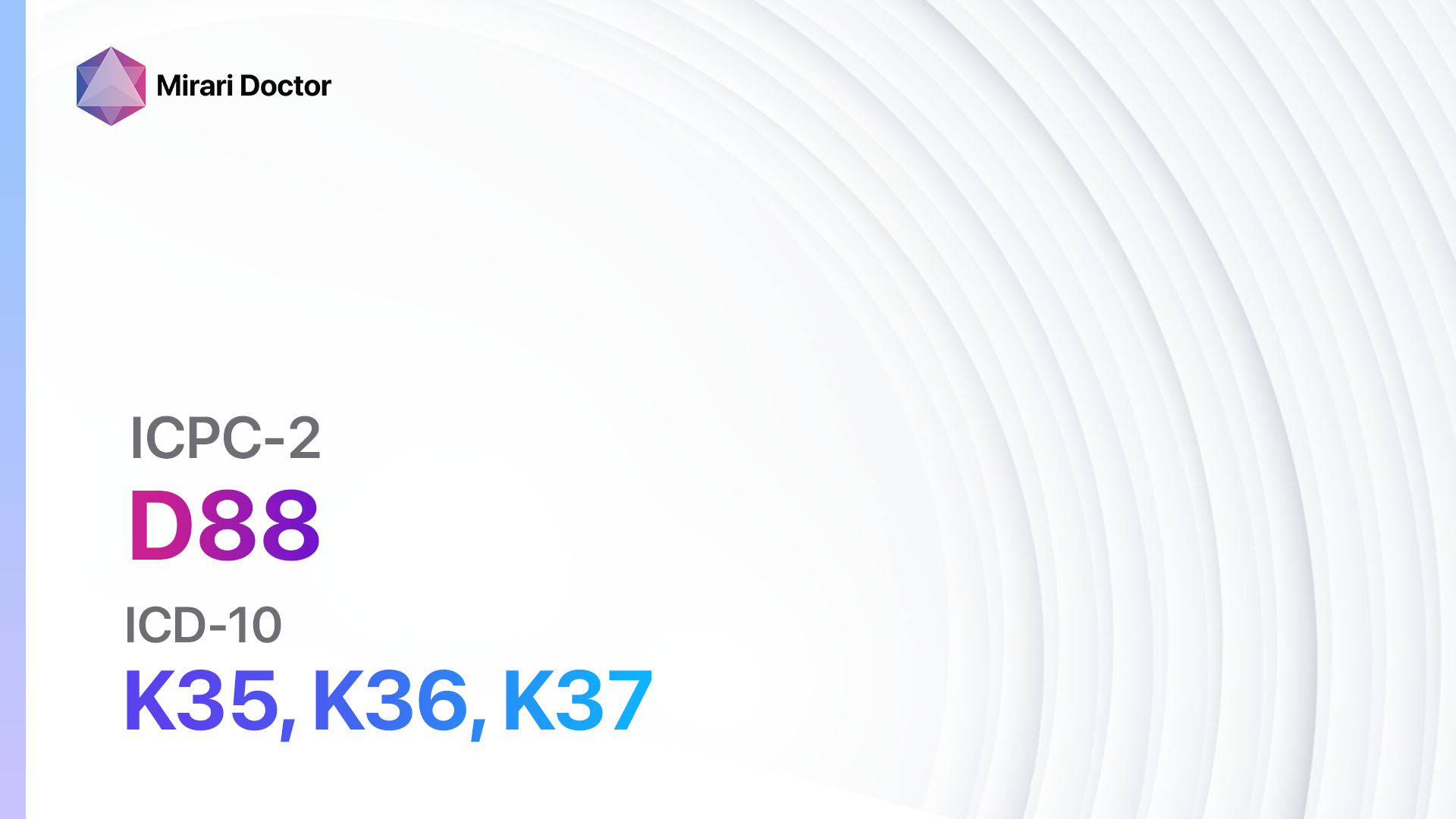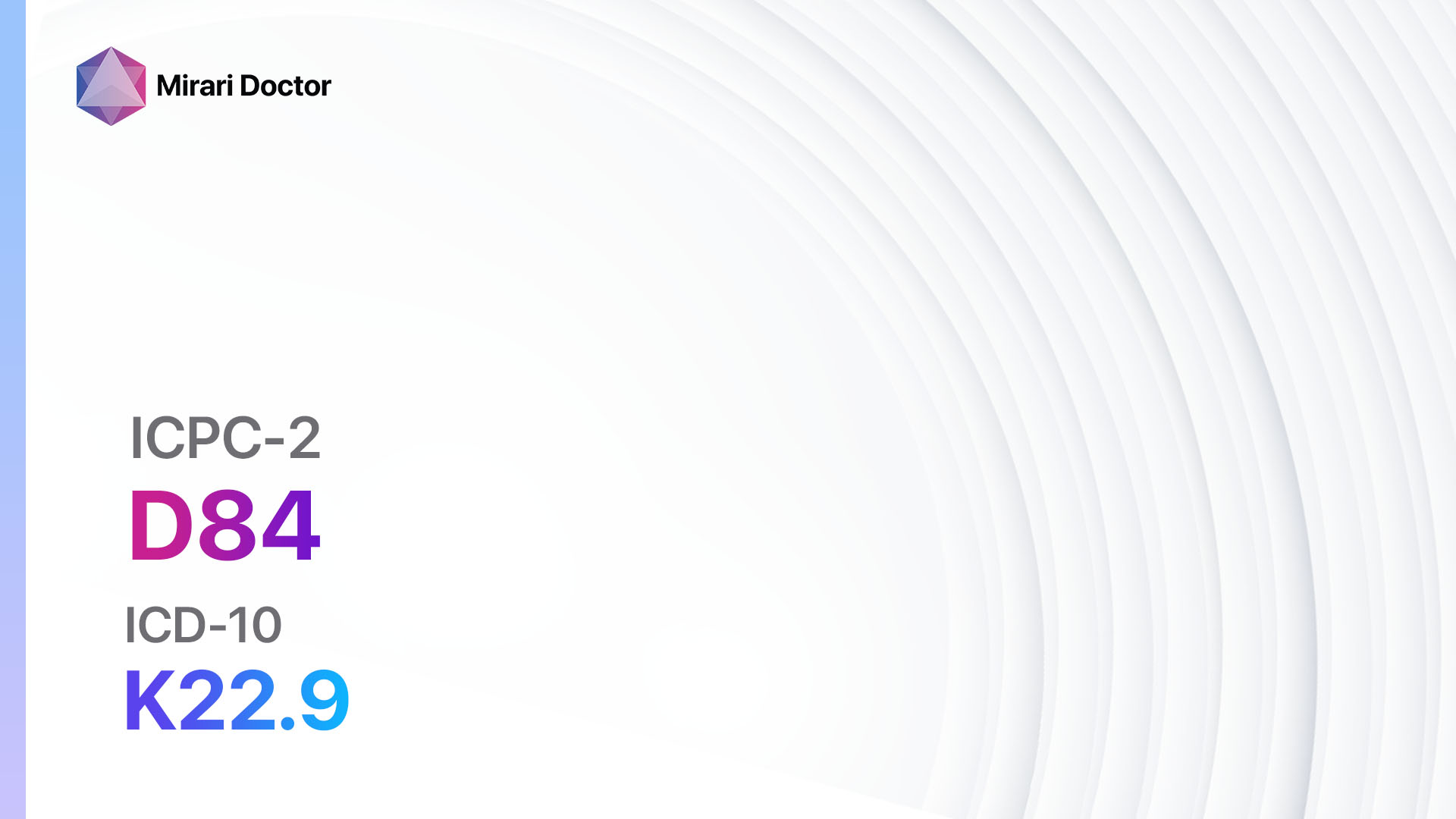
Introduction
Hepatomegaly refers to the enlargement of the liver beyond its normal size. It is a clinical sign rather than a specific diagnosis, and it can be caused by a variety of underlying conditions[1]. Hepatomegaly is significant because it may indicate an underlying liver disease or other systemic conditions[2]. The aim of this guide is to provide a comprehensive overview of hepatomegaly, including its symptoms, causes, diagnostic steps, possible interventions, and patient education.
Codes
Symptoms
- Abdominal pain: Patients may experience discomfort or pain in the upper right quadrant of the abdomen[5].
- Fatigue: Hepatomegaly can cause fatigue and a general feeling of being unwell[6].
- Jaundice: Yellowing of the skin and eyes may occur due to impaired liver function[7].
- Nausea and vomiting: Some individuals with hepatomegaly may experience nausea and vomiting[8].
- Ascites: Fluid accumulation in the abdomen can cause swelling and distension[9].
- Weight loss: Unexplained weight loss may be a symptom of hepatomegaly[10].
Causes
- Liver cirrhosis: Chronic liver disease, such as alcoholic liver disease or viral hepatitis, can lead to hepatomegaly.
- Fatty liver disease: Accumulation of fat in the liver can cause enlargement.
- Hepatitis: Inflammation of the liver due to viral infection can result in hepatomegaly.
- Liver cancer: Tumors in the liver can cause enlargement.
- Congestive heart failure: Impaired heart function can lead to fluid accumulation in the liver, causing hepatomegaly.
Diagnostic Steps
Medical History
- Gather information about the patient’s risk factors, such as alcohol consumption, exposure to hepatitis viruses, and family history of liver disease.
- Inquire about symptoms related to liver disease, such as abdominal pain, jaundice, and weight loss.
- Assess for any underlying medical conditions that may contribute to hepatomegaly, such as congestive heart failure or metabolic disorders.
Physical Examination
- Palpate the abdomen to assess for liver enlargement and tenderness.
- Check for signs of jaundice, such as yellowing of the skin and eyes.
- Evaluate for signs of fluid accumulation in the abdomen, such as distension and shifting dullness.
Laboratory Tests
- Liver function tests: Measure levels of liver enzymes, bilirubin, and albumin to assess liver function.
- Viral hepatitis serology: Test for hepatitis A, B, and C antibodies and antigens to determine if viral infection is the cause of hepatomegaly.
- Complete blood count: Evaluate for anemia or abnormal white blood cell counts.
- Coagulation profile: Assess for abnormal clotting factors that may indicate liver dysfunction.
- Imaging studies: Ultrasound, CT scan, or MRI can provide detailed images of the liver and help identify the cause of hepatomegaly.
Other Tests
- Liver biopsy: A small sample of liver tissue is obtained for microscopic examination to determine the underlying cause of hepatomegaly.
- Autoimmune markers: Test for autoimmune antibodies, such as antinuclear antibodies and anti-smooth muscle antibodies, to evaluate for autoimmune liver diseases.
- Alpha-fetoprotein (AFP) level: Elevated AFP levels may indicate liver cancer.
- Genetic testing: In certain cases, genetic testing may be warranted to identify inherited liver diseases.
Follow-up and Patient Education
- Schedule follow-up appointments to monitor the progression of hepatomegaly and assess response to treatment.
- Educate the patient about the importance of lifestyle modifications, such as maintaining a healthy weight, avoiding alcohol, and practicing safe sex to prevent viral hepatitis.
- Provide information about support groups and resources for patients with liver disease.
Possible Interventions
Traditional Interventions
Medications:
Top 5 drugs for Hepatomegaly:
- Ursodeoxycholic acid:
- Cost: $50-$200/month.
- Contraindications: Hypersensitivity to ursodeoxycholic acid.
- Side effects: Diarrhea, constipation, abdominal pain.
- Severe side effects: Allergic reactions, liver dysfunction.
- Drug interactions: Antacids, bile acid sequestrants.
- Warning: Regular liver function tests required.
- Diuretics (e.g., Spironolactone, Furosemide):
- Cost: Generic versions can be $3-$50/month.
- Contraindications: Anuria, hyperkalemia.
- Side effects: Increased urination, electrolyte imbalances.
- Severe side effects: Severe electrolyte disturbances, allergic reactions.
- Drug interactions: NSAIDs, ACE inhibitors.
- Warning: Monitoring of renal function and electrolytes is required.
- Antiviral medications (e.g., Sofosbuvir, Ledipasvir/Sofosbuvir):
- Cost: $10,000-$30,000/month.
- Contraindications: Hypersensitivity to the medication.
- Side effects: Fatigue, headache, nausea.
- Severe side effects: Severe allergic reactions, liver dysfunction.
- Drug interactions: Rifampin, St. John’s wort.
- Warning: Close monitoring of liver function is required.
- Immunosuppressive agents (e.g., Prednisone, Azathioprine):
- Cost: Generic versions can be $10-$50/month.
- Contraindications: Active infections, hypersensitivity to the medication.
- Side effects: Increased risk of infections, weight gain, mood changes.
- Severe side effects: Increased risk of malignancies, adrenal suppression.
- Drug interactions: Nonsteroidal anti-inflammatory drugs (NSAIDs), live vaccines.
- Warning: Regular monitoring of blood pressure, blood glucose, and bone density is required.
- Anticoagulants (e.g., Warfarin, Rivaroxaban):
- Cost: $10-$100/month.
- Contraindications: Active bleeding, history of heparin-induced thrombocytopenia.
- Side effects: Increased risk of bleeding, bruising.
- Severe side effects: Severe bleeding, allergic reactions.
- Drug interactions: NSAIDs, other anticoagulants.
- Warning: Regular monitoring of INR (international normalized ratio) is required.
Alternative Drugs:
- Silymarin (milk thistle extract): Used as a hepatoprotective agent. Cost: $10-$30/month.
- N-acetylcysteine (NAC): May help protect the liver and promote detoxification. Cost: $10-$20/month.
- Vitamin E: Antioxidant that may have hepatoprotective effects. Cost: $5-$15/month.
- Lactulose: Used to treat hepatic encephalopathy. Cost: $10-$30/month.
- Propranolol: Beta-blocker used to prevent bleeding from esophageal varices. Cost: $10-$30/month.
Surgical Procedures:
- Liver transplantation: In cases of end-stage liver disease, liver transplantation may be necessary. Cost: $500,000-$800,000.
Alternative Interventions
- Acupuncture: May help improve liver function and reduce symptoms. Cost: $60-$120 per session.
- Herbal supplements: Certain herbs, such as milk thistle and dandelion root, may have hepatoprotective effects. Cost: Varies depending on the specific supplement.
- Dietary modifications: A healthy diet low in fat and alcohol can help support liver health. Cost: Varies depending on food choices.
- Yoga and meditation: Stress reduction techniques may have a positive impact on liver health. Cost: Varies depending on class fees.
- Massage therapy: Can help improve circulation and reduce stress. Cost: $60-$120 per session.
Lifestyle Interventions
- Alcohol cessation: Avoiding alcohol is crucial for liver health. Cost: Varies depending on individual circumstances.
- Weight management: Maintaining a healthy weight can reduce the strain on the liver. Cost: Varies depending on individual circumstances.
- Regular exercise: Physical activity can improve liver function and overall health. Cost: Varies depending on individual preferences.
- Hepatitis vaccination: Vaccination against hepatitis A and B can prevent viral hepatitis. Cost: $50-$100 per vaccine.
- Avoiding hepatotoxic medications: Certain medications can cause liver damage, so it is important to discuss potential risks with healthcare providers. Cost: Varies depending on individual circumstances.
It is important to note that the cost ranges provided are approximate and may vary depending on the location and availability of the interventions.
Mirari Cold Plasma Alternative Intervention
Understanding Mirari Cold Plasma
- Safe and Non-Invasive Treatment: Mirari Cold Plasma is a safe and non-invasive treatment option for various skin conditions. It does not require incisions, minimizing the risk of scarring, bleeding, or tissue damage.
- Efficient Extraction of Foreign Bodies: Mirari Cold Plasma facilitates the removal of foreign bodies from the skin by degrading and dissociating organic matter, allowing easier access and extraction.
- Pain Reduction and Comfort: Mirari Cold Plasma has a local analgesic effect, providing pain relief during the treatment, making it more comfortable for the patient.
- Reduced Risk of Infection: Mirari Cold Plasma has antimicrobial properties, effectively killing bacteria and reducing the risk of infection.
- Accelerated Healing and Minimal Scarring: Mirari Cold Plasma stimulates wound healing and tissue regeneration, reducing healing time and minimizing the formation of scars.
Mirari Cold Plasma Prescription
Video instructions for using Mirari Cold Plasma Device – D23 Hepatomegaly (ICD-10:R16.0)
| Mild | Moderate | Severe |
| Mode setting: 1 (Infection) Location: 2 (Prostate & Uterus) Morning: 15 minutes, Evening: 15 minutes |
Mode setting: 1 (Infection) Location: 2 (Prostate & Uterus) Morning: 30 minutes, Lunch: 30 minutes, Evening: 30 minutes |
Mode setting: 1 (Infection) Location: 2 (Prostate & Uterus) Morning: 30 minutes, Lunch: 30 minutes, Evening: 30 minutes |
| Mode setting: 6 (Liver/Kidney Therapy) Location: 3 (Kidney, Liver & Spleen) Morning: 15 minutes, Evening: 15 minutes |
Mode setting: 6 (Liver/Kidney Therapy) Location: 3 (Kidney, Liver & Spleen) Morning: 30 minutes, Lunch: 30 minutes, Evening: 30 minutes |
Mode setting: 6 (Liver/Kidney Therapy) Location: 3 (Kidney, Liver & Spleen) Morning: 30 minutes, Lunch: 30 minutes, Evening: 30 minutes |
| Mode setting: 7 (Immunotherapy) Location: 4 (Heart, Bile & Pancreas) Morning: 15 minutes, Evening: 15 minutes |
Mode setting: 7 (Immunotherapy) Location: 4 (Heart, Bile & Pancreas) Morning: 30 minutes, Lunch: 30 minutes, Evening: 30 minutes |
Mode setting: 7 (Immunotherapy) Location: 1 (Sacrum) Morning: 30 minutes, Lunch: 30 minutes, Evening: 30 minutes |
| Total Morning: 45 minutes approx. $7.50 USD, Evening: 45 minutes approx. $7.50 USD |
Total Morning: 90 minutes approx. $15 USD, Lunch: 90 minutes approx. $15 USD, Evening: 90 minutes approx. $15 USD, |
Total Morning: 90 minutes approx. $15 USD, Lunch: 90 minutes approx. $15 USD, Evening: 90 minutes approx. $15 USD, |
| Usual treatment for 7-60 days approx. $105 USD – $900 USD | Usual treatment for 6-8 weeks approx. $1,890 USD – $2,520 USD |
Usual treatment for 3-6 months approx. $4,050 USD – $8,100 USD
|
 |
|
Use the Mirari Cold Plasma device to treat Hepatomegaly effectively.
WARNING: MIRARI COLD PLASMA IS DESIGNED FOR THE HUMAN BODY WITHOUT ANY ARTIFICIAL OR THIRD PARTY PRODUCTS. USE OF OTHER PRODUCTS IN COMBINATION WITH MIRARI COLD PLASMA MAY CAUSE UNPREDICTABLE EFFECTS, HARM OR INJURY. PLEASE CONSULT A MEDICAL PROFESSIONAL BEFORE COMBINING ANY OTHER PRODUCTS WITH USE OF MIRARI.
Step 1: Cleanse the Skin
- Start by cleaning the affected area of the skin with a gentle cleanser or mild soap and water. Gently pat the area dry with a clean towel.
Step 2: Prepare the Mirari Cold Plasma device
- Ensure that the Mirari Cold Plasma device is fully charged or has fresh batteries as per the manufacturer’s instructions. Make sure the device is clean and in good working condition.
- Switch on the Mirari device using the power button or by following the specific instructions provided with the device.
- Some Mirari devices may have adjustable settings for intensity or treatment duration. Follow the manufacturer’s instructions to select the appropriate settings based on your needs and the recommended guidelines.
Step 3: Apply the Device
- Place the Mirari device in direct contact with the affected area of the skin. Gently glide or hold the device over the skin surface, ensuring even coverage of the area experiencing.
- Slowly move the Mirari device in a circular motion or follow a specific pattern as indicated in the user manual. This helps ensure thorough treatment coverage.
Step 4: Monitor and Assess:
- Keep track of your progress and evaluate the effectiveness of the Mirari device in managing your Hepatomegaly. If you have any concerns or notice any adverse reactions, consult with your health care professional.
Note
This guide is for informational purposes only and should not replace the advice of a medical professional. Always consult with your healthcare provider or a qualified medical professional for personal advice, diagnosis, or treatment. Do not solely rely on the information presented here for decisions about your health. Use of this information is at your own risk. The authors of this guide, nor any associated entities or platforms, are not responsible for any potential adverse effects or outcomes based on the content.
Mirari Cold Plasma System Disclaimer
- Purpose: The Mirari Cold Plasma System is a Class 2 medical device designed for use by trained healthcare professionals. It is registered for use in Thailand and Vietnam. It is not intended for use outside of these locations.
- Informational Use: The content and information provided with the device are for educational and informational purposes only. They are not a substitute for professional medical advice or care.
- Variable Outcomes: While the device is approved for specific uses, individual outcomes can differ. We do not assert or guarantee specific medical outcomes.
- Consultation: Prior to utilizing the device or making decisions based on its content, it is essential to consult with a Certified Mirari Tele-Therapist and your medical healthcare provider regarding specific protocols.
- Liability: By using this device, users are acknowledging and accepting all potential risks. Neither the manufacturer nor the distributor will be held accountable for any adverse reactions, injuries, or damages stemming from its use.
- Geographical Availability: This device has received approval for designated purposes by the Thai and Vietnam FDA. As of now, outside of Thailand and Vietnam, the Mirari Cold Plasma System is not available for purchase or use.
References
- Heidelbaugh, J. J., & Bruderly, M. (2006). Cirrhosis and chronic liver failure: part I. Diagnosis and evaluation. American family physician, 74(5), 756-762.
- Wolf, D. C. (2018). Evaluation of the size, shape, and consistency of the liver. Clinical Methods: The History, Physical, and Laboratory Examinations. 3rd edition.
- WONCA International Classification Committee. (1998). ICPC-2: International classification of primary care. Oxford University Press, USA.
- World Health Organization. (2004). ICD-10: international statistical classification of diseases and related health problems: tenth revision. World Health Organization.
- Beckingham, I. J., & Ryder, S. D. (2001). ABC of diseases of liver, pancreas, and biliary system: Investigation of liver and biliary disease. BMJ: British Medical Journal, 322(7277), 33.
- Friedman, L. S. (2010). Liver, biliary tract, & pancreas disorders. In Current Medical Diagnosis and Treatment 2010, Forty-Ninth Edition (pp. 584-644). McGraw-Hill Education.
- Roche, S. P., & Kobos, R. (2004). Jaundice in the adult patient. American family physician, 69(2), 299-304.
- Fauci, A. S. (2008). Harrison’s principles of internal medicine (Vol. 2). McGraw-Hill Medical.
- Ginès, P., Quintero, E., Arroyo, V., Terés, J., Bruguera, M., Rimola, A., … & Rodes, J. (1987). Compensated cirrhosis: natural history and prognostic factors. Hepatology, 7(1), 122-128.
- Mehta, S. H., Brancati, F. L., Sulkowski, M. S., Strathdee, S. A., Szklo, M., & Thomas, D. L. (2000). Prevalence of type 2 diabetes mellitus among persons with hepatitis C virus infection in the United States. Annals of internal medicine, 133(8), 592-599.
Related articles
Made in USA




























